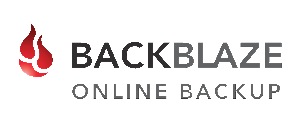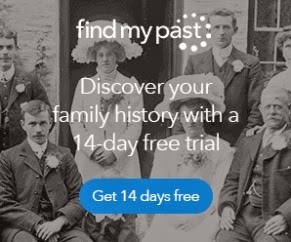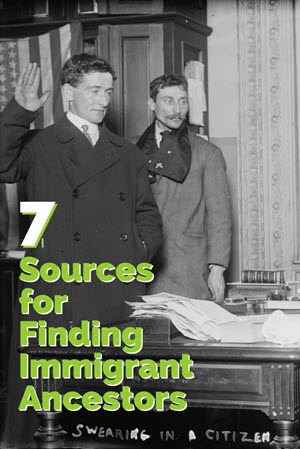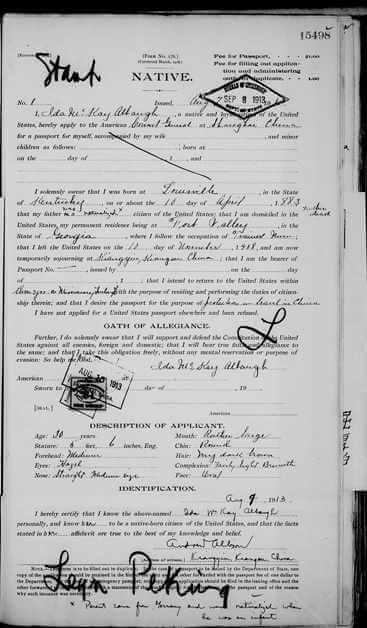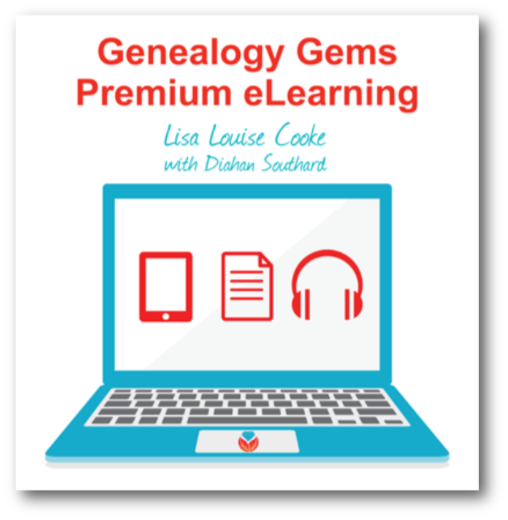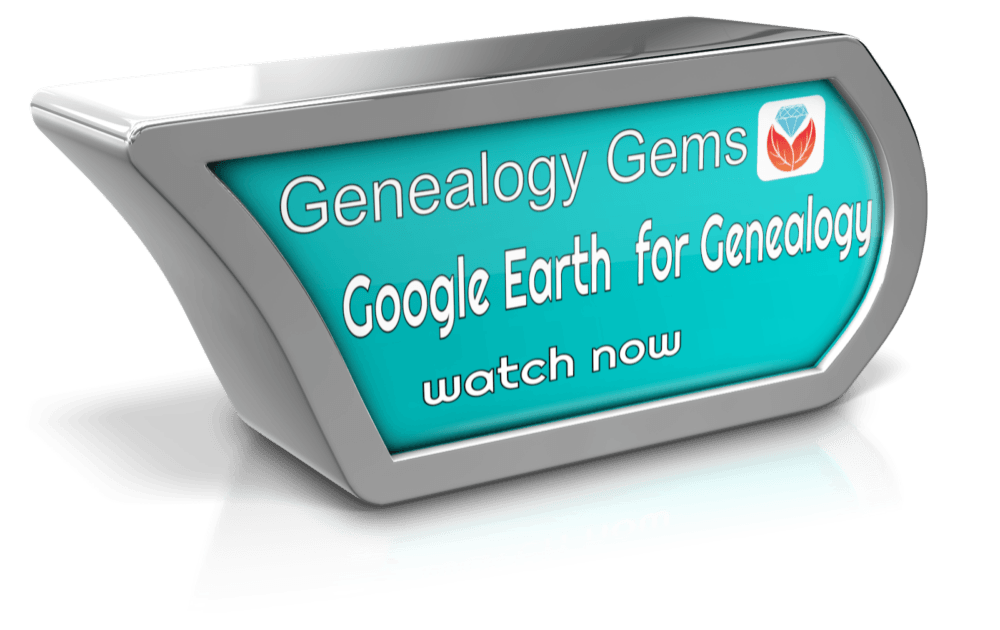Blog


Genealogy Gems Podcast Episode 216
The Genealogy Gems Podcast
Episode #216
with Lisa Louise Cooke
In this episode:
- Lisa shares her experiences Down Under in Australia
- Enjoy Lisa’s exclusive RootsTech 2018 interview with Findmypast CEO Tamsin Todd;
- Military Minutes contributor Michael Strauss shines a spotlight on women who have served in the U.S. military;
- Your DNA Guide Diahan Southard introduces the MyHeritage chromosome browser; and
- Genealogy Gems Premium membership gets its biggest boost ever.
NEWS: ROOTSTECH 2018 RECAP
Click here to watch the short RootsTech 2018 official recap video.
NEWS: GENEALOGY GEMS PREMIUM eLEARNING

Genealogy Gems Premium membership is now Genealogy Gems Premium eLearning! More than 20 DNA video tutorials have been added, but it’s still all available for one low annual price. And now you can really make the most of 50+ Premium Videos and 150+ Premium Podcast episodes with the new Premium eLearning Companion Guide book. It’s the ultimate ongoing genealogy education!
Click here to read the full announcement.
Lisa Louise Cooke uses and recommends RootsMagic family history software. From within RootsMagic, you can search historical records on FamilySearch.org, Findmypast.com and MyHeritage.com.
Keep your family history research, photos, tree software files, videos and all other computer files safely backed up with Backblaze, the official cloud-based computer backup system for Lisa Louise Cooke’s Genealogy Gems. Learn more at https://www.backblaze.com/Lisa.
BONUS CONTENT for Genealogy Gems App Users:
Beginning German Genealogy: Defining “German”
If you’re listening through the Genealogy Gems app, your bonus content for this episode is some get-started-now tips from Legacy Tree Genealogists on tracing your German ancestors. The Genealogy Gems app is FREE in Google Play and is only $2.99 for Windows, iPhone and iPad users.
To learn more about Legacy Tree services and its research team, visit www.legacytree.com. Exclusive Offer for Genealogy Gems readers: Receive $100 off a 20-hour research project using code GGP100. (Offer may expire without notice.)
MILITARY MINUTES WITH MICHAEL STRAUSS: CELEBRATING WOMEN IN U.S. MILITARY HISTORY

Click here to see the full article (and plenty of images!) on the Genealogy Gems website.
INTERVIEW: TAMSIN TODD AND BEN BENNETT, FINDMYPAST.COM
Findmypast.com is the Genealogy Giant best known for its deep, unparalleled historical record content for England, Scotland, Ireland and Wales.
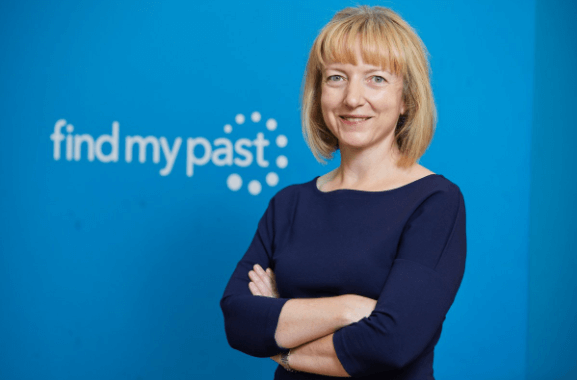
Tamsin Todd is the Chief Executive Officer of Findmypast.com. She “has worked in the travel, retail and technology sectors, and brings with her a track record of leading successful growth businesses. She spent the early part of her career at Amazon and then Microsoft, where she led the introduction of ecommerce and search products into the UK and Europe. This was followed by stints as Head of Ecommerce at Betfair, and Managing Director of TUI-owned Crystal Ski Holidays. She joins Findmypast from Addison Lee, where she was Chief Customer Officer of Europe’s largest car service company. Tamsin lives in London with her family, and is Digital Trustee of the Imperial War Museums.”
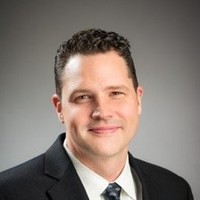
Ben Bennett is Executive Vice President, North America and International at Findmypast.com, “focused on helping families stay connected in the United States and other markets across the globe.”
EPISODE SPONSOR: CASPER MATTRESSES

The original Casper mattress combines multiple, supportive memory foams for a quality sleep surface with the right amounts of both sink and bounce. Breathable design helps you sleep cool and regulates your body temperature throughout the night Delivered right to your door in a small, ‘how do they do that?!’ sized box! Free shipping and returns in the US and Canada.
Exclusive Genealogy Gems offer! Get $50 toward select mattresses by visiting Casper.com/gems and using gems at checkout. (Terms and conditions apply.)
YOUR DNA GUIDE: MYHERITAGE CHROMOSOME BROWSER
Just last year, if you had asked me if I thought anyone could catch AncestryDNA in their race to own the genetic genealogy market, I would have been skeptical. However, it is clear that MyHeritage intends to be a contender, and they are quickly ramping up their efforts to gain market share and your confidence.
MyHeritage began 2018 by making a much-needed change to their DNA matching algorithm, which had some errors in it. They were able to adjust it, and now it is humming right along, telling our second cousins from our fourth. Another development, launched in February, is the addition of a Chromosome Browser.
THE NEW MYHERITAGE DNA CHROMOSOME BROWSER
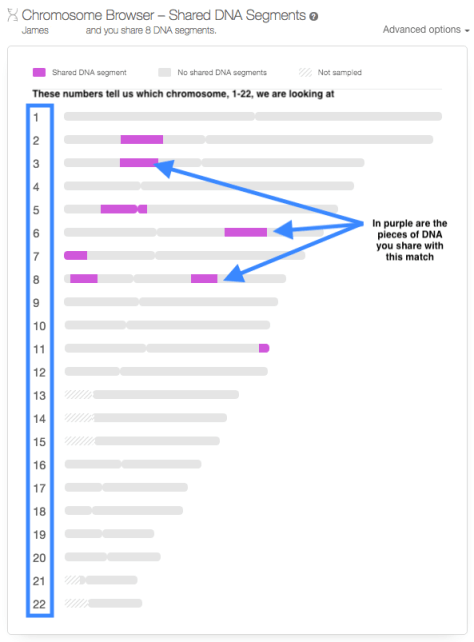
Much like you would browse the library shelves for the perfect book, or browse through the sale rack for a great bargain, you can use a Chromosome Browser to look through your chromosomes for the pieces of DNA you share with your genetic cousins.
Chromosome Browsers can be everything from a fun way to review your genetic genealogy results, to a tool to assist in determining how you are related to someone else. Let’s go over three tips to help you make use of this new tool.
NAVIGATING TO THE CHROMOSOME BROWSER
There are actually two different kinds of Chromosome Browsers in MyHeritage: one to view only the segments you share with one match (the One-to-One Browser), and a browser where you can see the segments shared with multiple matches (the One-to-Many Browser).
To get to the One-to-One Browser, head over to your match page and find a cousin for whom you would like to see your shared DNA segments. Click on Review DNA Match, then scroll down past all the individual match information, past the Shared Matches and Shared Ethnicities until you see the Chromosome Browser.
USING THE ONE-TO-MANY CHROMOSOME BROWSER
To find the One-to-Many Chromosome Browser, you can use the main DNA navigation menu at the top of the MyHeritage homepage. Click on DNA, then on Chromosome Browser, as shown below.
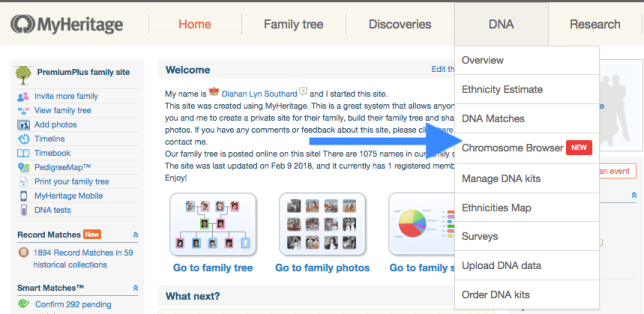
In the One-to-Many Chromosome Browser you can compare yourself, or any account you manage, to anyone else in your match page. To choose a match to evaluate, just click on their name and they will be added to the queue at the top, as shown here.
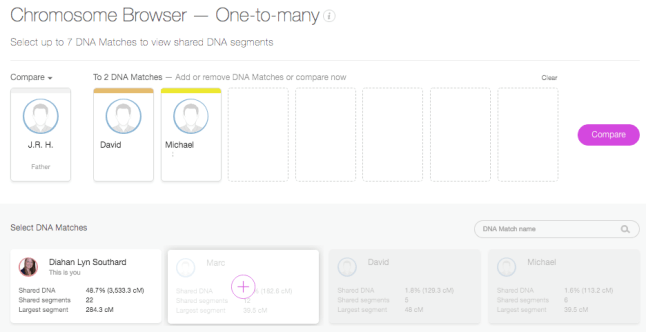
Clicking on Compare will then allow you to see the actual segments you share with each person:
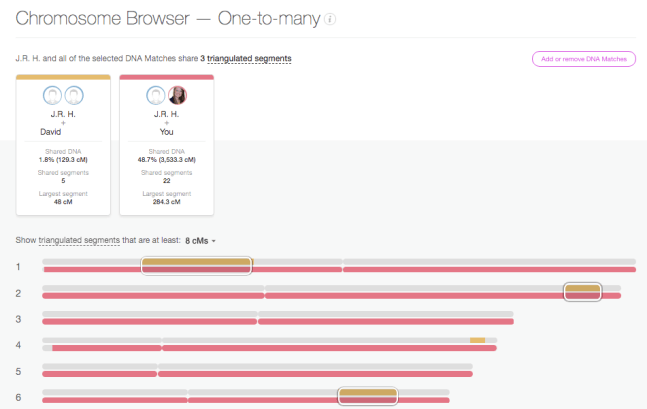
In this One-To-Many view, each individual match gets their own line for each chromosome. Since we have added 7 people to the Chromosome Browser, there are seven lines next to each chromosome number. Each match not only gets their own line, but also their own color. So you can easily match up the lines on the chromosome to the match that shares that piece of DNA with you. For the majority of people the majority of the time, these Chromosome Browsers are just another fun way to visualize the connection you have with your DNA match. In the end, it doesn’t matter where you are sharing on the chromosome, just how much DNA you are sharing. You can obtain that information from your main match page and never look at this Chromosome Browser image, and still make fantastic genetic genealogy discoveries.
THE TRIANGULATION TOOL
Another feature of the Chromosome Browser on MyHeritage is the Triangulation tool. To understand how this works, you first need to understand that you actually have two copies of each chromosome. Two copies of chromosome 1, two copies of chromosome 2, etc. One copy is from mom, and the other from dad. However, in the Chromosome Browser image, you see only one line for yourself (in grey). Therefore, when you see someone matching you on chromosome 14, for example, you don’t know if that person is matching you on the chromosome 14 you got from your mom, or the chromosome 14 you got from your dad.
Likewise, if you see two people whose shared piece with you looks to be in the same location on the same chromosome, you can’t tell if they are both sharing on the same copy of that chromosome, or if one match is related to your dad’s family, and the other match is related to your mom’s family. However, this is what the Triangulation tool does for us. It tells us if two (or three or four, etc.) matches are sharing on the same copy of the same chromosome. Be careful when you use this tool, though. Many erroneously assume that when they see a segment shared between multiple people, that indicates the presence of a recent common ancestor for all of those people. However, that is not always the case.
MyHeritage.com is the place to make connections with relatives overseas, particularly with those who may still live in your ancestral homeland. Click here to see what MyHeritage can do for you: it’s free to get started.
Ready to start exploring what the MyHeritage DNA chromosome browser may tell you about your family history? You have two options. Click here to upload your autosomal DNA test results from another company to MyHeritage for FREE. Or click here to order a MyHeritage DNA test kit. Either way, you can start using all the great tools at MyHeritage DNA!
PROFILE AMERICA: FORD LAUNCHES ASSEMBLY LINE
PRODUCTION CREDITS:
Lisa Louise Cooke, Host and Producer
Sunny Morton, Editor
Diahan Southard, Your DNA Guide, Content Contributor
Michael Strauss, Military Minutes Content Contributor
Hannah Fullerton, Production Assistant
Lacey Cooke, Service Manager
Disclosure: This page contains affiliate links and Genealogy Gems will be compensated if you make a purchase after clicking on these links (at no additional cost to you). Thank you for supporting this free podcast and blog!
Subscribe to the Genealogy Gems newsletter to receive a free weekly e-mail newsletter, with tips, inspiration and money-saving deals.

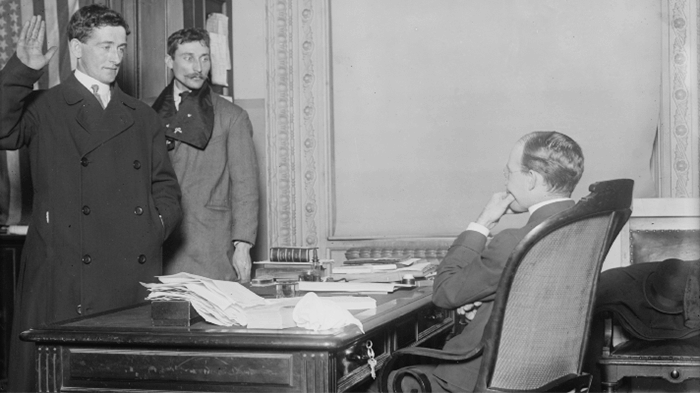
7 Sources for Finding Immigrant Ancestors
If you have immigrant ancestors who arrived in the U.S in the 1900s, these 7 sources can help you track their journey—perhaps even to that overseas hometown, so crucial to your genealogy success!
(Thanks to Legacy Tree Genealogists for providing us with this guest blog post. Learn more about them below.)
Do you have an ancestor who came to the United States in the 20th century? If so, you’re in luck, as there are a variety of resources available to help you learn about their journey to the United States and where they came from. The biggest challenge in tracing the ancestry of immigrants is that you must first identify their exact hometown (not just country or region) before you can locate records in their home country. Luckily, there were a variety of records created when an immigrant came to the United States in the 20th century that can provide helpful clues for finding their exact place of birth.
7 record types for finding 20th-century immigrant ancestors
Naturalization and alien registration records
Naturalization records were created as part of an application for citizenship, while alien registration records were created for any non-citizens living in the United States. Both sets of records can contain a wealth of information about immigrants, including their hometown, family members, identifying information such as birthdates or physical descriptions, and when and how they traveled to the United States.
After 1906, there were three parts to naturalization records: a declaration of intention (sometimes called 1st papers), a petition for naturalization (2nd papers) and the naturalization certificate given if citizenship was granted. The declaration of intention is the most useful for genealogical purposes, as immigrants were required to state their birth dates, often family members’/spouses’ birth dates, and usually their hometowns.
Naturalization records were kept by the various federal, state, and county courts, and many have been digitized on various genealogy websites. Naturalization records can be found at the National Archives, FamilySearch.org, and Ancestry.com. After the Alien Registration Act of 1940, all immigrants to the United States were required to register and be fingerprinted. Alien Files began to be kept in 1944 and are now held by the National Archives.
(Editor’s note: Genealogy Gems Premium e-Learning members can also learn about World War I-era enemy alien affidavits, required for all non-naturalized U.S. residents, in the Genealogy Gems Premium Podcast episode #146.)
You can narrow down the time period your immigrant ancestor naturalized by checking various censuses which asked citizenship information (1900, 1910, 1920 and 1930). The 1920 census is particularly helpful as it asked the year of naturalization in addition to the year of arrival. There were three codes recorded in these columns: PA (has submitted papers), NA (naturalized) or AL (alien—never applied to become a citizen). Knowing where they were living at the time of naturalization will help you narrow down which court they may have used.
Keep in mind that until 1922, married women (and their children) were automatically given the citizenship of the husband (if he was a citizen, so was the wife; if a woman married a non-citizen she lost their citizenship until he became a naturalized citizen). Prior to 1922 wives did not need to apply separately, so there will almost never be naturalization papers for married women—you’ll need to look under their husband’s name.
Passenger lists
Passenger lists were created to document the travels of immigrants and are organized by ship. Some list the travelers’ hometown and their closest living relatives there, which can be extremely useful in linking families. Keep in mind that this will usually be the immigrants’ most recent place of residence (which is not always the birthplace).
When searching passenger lists, be sure to check both emigration and immigration records. Passenger lists created at the point of departure and the port of entry and may give slightly different information. For example, the Hamburg Passenger Lists for Germany recorded those leaving, while the New York Passenger Lists give arrivals—you may find your immigrant on both.
United States passenger lists will often also state the relative they are going to meet who is already in the United States—this can help in differentiating people of the same name. (Another bonus for Premium eLearning members: learn about emigration records in Premium Podcast episode #135.)
The port they came from or arrived in can also give clues as to where they were from in the Old Country—people generally immigrated and settled with others who were from the same place. While many of passenger lists have been digitized on the big genealogy websites such as FindMyPast.com, Ancestry.com, and FamilySearch, do not overlook smaller collections like the Immigrant Ancestors Project, which focuses on other emigration records from smaller ports.
Canada Border Crossings
If you are not finding your immigrant in United States passenger lists, see if they came through Canada. Many immigrants arrived in Canada first and then crossed the border to the United States. Keep in mind that only immigrants who came through ports or trains were recorded—if they crossed by horse or car they will not be included in the records. These records vary but often include the name of the immigrant, who they were going to join, their last residence and family member there, their place of birth, and any previous visits to the United States (4). Both Ancestry.com and the free FamilySearch.org have digitized records border crossings to the U.S. from Canada beginning in 1895 (FamilySearch’s go to 1956 and Ancestry.com’s to 1960).
Passport applications
Did your immigrant ancestor ever apply for a passport? Many immigrants went back to visit family in their home country for a few months or even years, before returning back to the United States If they had already become a citizen, they may have applied for a passport to travel. These records can give you a wealth of information about the person who applied but also sometimes their parents.
If you are stuck on an immigrant, look for records about their children—they may provide valuable clues. For example, my great-great aunt applied for a passport in 1918 to be a missionary in China, and she stated that her father had been brought over as an infant from Germany with his parents, who had then naturalized. However, on her passport renewal she stated he was born in Baltimore, so his exact birthplace is still a mystery. However, the passport provided an important clue—now I know to look in the area around Baltimore for naturalization records that could mention his parents. (Click here to read a Genealogy Gem listener’s success story using passport applications and more information on finding them.)
Church records
Many immigrants attended church in their new town along with others from their homeland. Records created at the church, such as baptisms, marriages, and burials, can often provide information about where they came from. Some of these churches even conducted services in the native language of their congregants (i.e. German). These records can be challenging to locate as many of them are still kept by the local churches and have not yet been digitized by the major genealogy websites, but they are well worth it. Try contacting the local church to see if they still have records or know where the records are now. It’s polite to offer a small compensation for their time. Click here to find a list of articles on this website about all different kinds of church records.
Foreign language newspapers
A little-known fact about immigration is that many immigrant communities published local newspapers in the language of their homeland in their new community as a way to stay connected. These newspapers often include birth, marriage and death announcements relevant to the community of immigrants and may list your ancestor. Many of these newspapers are listed on the Library of Congress website Chronicling America, covered in detail in an exclusive interview in the Genealogy Gems Premium Podcast episode #158. (If you’re not a Premium member, consider checking out Lisa Louise Cooke’s book How to Find Your Family History in Newspapers or click here to read articles relating to newspaper research on our blog.
For more help finding immigrant ancestors….
Thanks to Mckenna Cooper, a researcher for Legacy Tree Genealogists, for writing this guest article. Legacy Tree Genealogists is a worldwide genealogy research firm with extensive expertise in breaking through genealogy brick walls. To learn more about Legacy Tree services and its research team, visit www.legacytree.com. Exclusive Offer for Genealogy Gems readers: Receive $100 off a 20-hour research project using code GGP100! (This offer may expire without notice.)
If you prefer the DIY approach to finding your immigrant ancestors rather than hiring assistance, Genealogy Gems is here for you! We gave you lots of links above to further reading. You may have noticed that Genealogy Gems Premium eLearning provides even more resources for you–why not consider whether this may be a good option for you?
Disclosure: This article contains affiliate links and Genealogy Gems will be compensated if you make a purchase after clicking on these links (at no additional cost to you). Thank you for supporting Genealogy Gems!
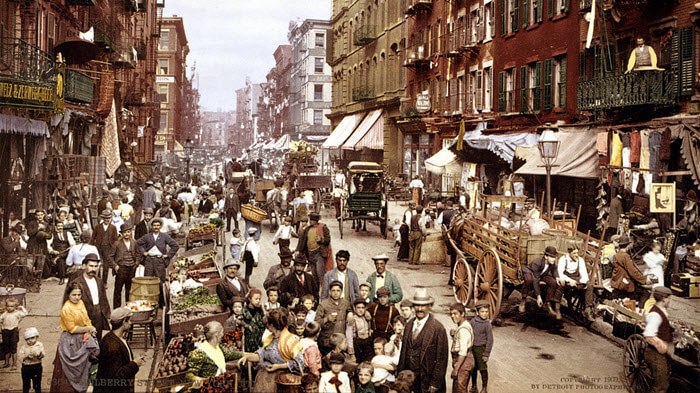
Vintage NYC Street Views on Google Earth
You can now see New York City street views from the late 1800s and early 1900s as Google Earth street views. Take a virtual visit to the Big Apple as it was 100 years ago! Or travel back even further in time to an 1836 map of NYC conveniently overlaid on a modern Google Earth view. These are just two of the many ways to use Google Earth for genealogy—and for fun.

Vintage New York City Street Views on Google Earth
Over 80,000 original photos from the late 1800s and early 1900s have been mapped into Google Earth to provide what’s essentially a Google Street View map of old New York City!
The site is called OldNYC, and it’s free.
As you can see from this overview map (below), the old photos are concentrated in the areas of Staten Island, Brooklyn, Queens and Lower and Upper Manhattan. Dots represents historic photos that have been overlaid on Google Earth’s modern map (satellite view is also available).
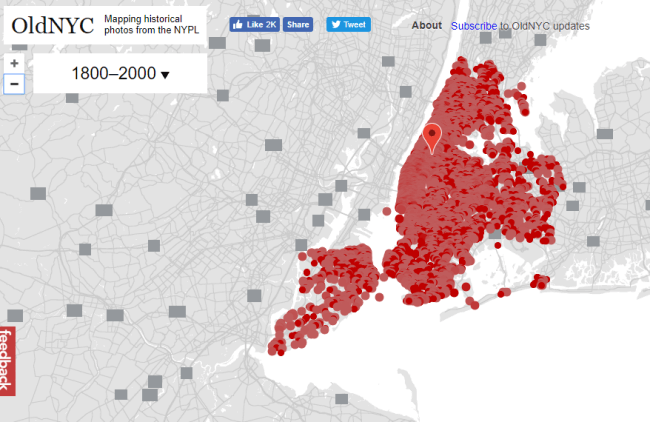
Old NYC
You can zoom in to click on individual dots, which will bring up one or more individual photos of certain neighborhoods or street fronts:
Select the photos that match up best with your family history interests, such as a shot of your family’s old store front or apartment building. Or choose images that represent the time period in which your relatives lived in the area, so you can get a flavor of what their neighborhood would have looked like. (Click here for some ideas about where to look for your family’s exact address during the late 1800s or early 1900s.)
These photos all come from the New York Public Library’s Photographic Views of New York City, 1870s-1970s collection, which is also free to view online.
According to this article at BusinessInsider.com, a developer Dan Vanderkam worked with the New York Public Library to plot all the photos onto Google Earth. (A hat-tip to Genealogy Gems listener and reader Jennifer, who sent me this article because she knows how much I love old maps and data visualization!)
Another Old NYC Street View: 1836 Map
While we’re on the subject, I also want to mention another cool tool for visualizing old NYC street views. At the Smithsonian.com, there’s a cool historic map overlay of an 1836 New York City map in Google Earth. Use the scrolling and zooming tools to explore the parts of NYC that were already settled–and to compare them to what’s there today. You can also swap views to see the 1836 map with just a little round window of the modern streets.
The accompanying article quotes famous map collector David Rumsey about the 1836 map, which is his. He describes how you can see that much of the topography of Manhattan has changed over the years—did you know Manhattan used to be hilly? And I love how he calls out artistic features on the old map, too.
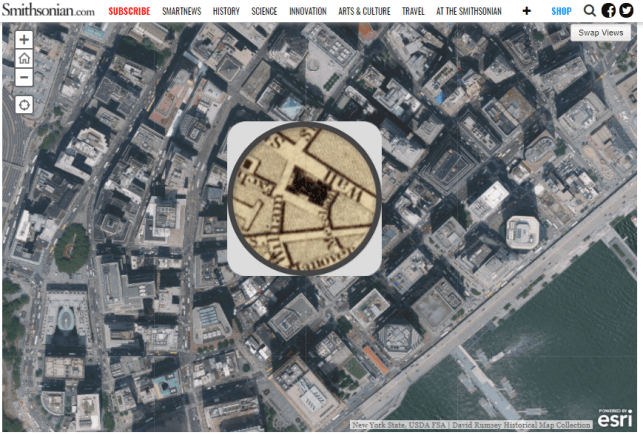
Smithsonian NYC street view 1836
Unfortunately, the old map doesn’t show much in the way of residents’ property lines or buildings. But you can clearly see the street layouts and where the parks and hills were. Comparing these areas with Google Earth’s street view today can help you better understand what things looked like in a much older version of one of the world’s great cities.
Use Google Earth for Your Genealogy
There are so many ways to use Google Earth for genealogy! My free video class will get you started. After a quick tutorial on downloading and navigating Google Earth, see how to utilize its powerful tools to identify an old family photo, map out addresses that may have changed and even plot an old ancestral homestead.
Click here to enjoy this free video!


